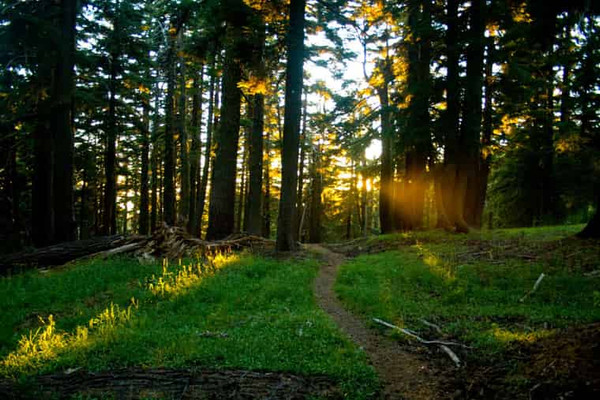How to Make Your Life Adventure Ready
Posted by Jen Rose Smith on 21st Mar 2019
Some epic adventures are worth quitting your life for. We're talking about the months-long bike tours, the overland trips, and the long distance backpacking trips. In between the epics, though, are a thousand tiny ways to get into the woods, from impromptu paddles to single-night backpacking trips.
It’s not always easy, and there are plenty of reasons to stay on the couch: assembling gear takes time and effort, adventure buddies can be hard to find on short notice, and weather turns on a dime. But if you use these simple, weeknight-tested techniques to keep your life adventure prepped, you'll be able to get out the door with minimal fuss, keep your backcountry skills on point, and stay ready for the next big trip.
1. Assemble an Adventure Kit

If all your cookware is packed beforehand, you'll be able to get out of the house (and into the backcountry) with minimal fuss. oliveoligarchy
When you hear the call of the wild, don’t waste half an hour looking for your headlamp. Keep camping equipment stashed in bags to throw in the back of the car, then stuff into a kayak, bike pannier, or backpack.
The basics: Packing for a full wilderness expedition takes a bit more thought, but the bare necessities for an overnight outing can live in a duffel bag. On the list: sleeping bag, sleeping pad, headlamp with extra batteries, water bottles, and a tent.
Mess kit: Stuff a gym bag with all the things you’d hate to forget—basics include a camping stove, pot, silicone bowls and cups, a coffee cone with filter, utensils, salt, oil, and a water treatment system. It’s worth throwing in some imperishable foods, too, so you don’t have to think about dinner: a packet of Tasty Bites, a bag of couscous, granola, and dried milk might not be gourmet camping fare, but that’s not the point.
First-aid plus: Make a dedicated bag and keep it on hand for every outing. In addition to the usual first aid kit items—bandages, blister treatment, ibuprofen, antibacterial cream, ACE bandage—keep it stocked with the small things that fall through the cracks when you’re packing. Include parachute cord for bear hangs, more extra batteries, duct tape, a multi tool, compass, an emergency blanket, backup water treatment like iodine or Aquamira, hand sanitizer, toilet paper, lighter, sunscreen, and cash.
2. Keep your Gear in Working Order
It’s easy to throw punctured bike tubes into dark corners, repack your soot-clogged camping stove, and put off repairing a leaky sleeping pad. But making a discipline of keeping your kit trail, road- or woods-ready means you won’t be fixing flats and scrambling while your friends wait in the driveway.
3. Write A Wish List

When the trail beckons, it's important to be prepped. Andy Spearing
An evening of clear weather and free time can make your mind go blank, leaving you scratching your head and scanning maps. Having a standing list of tiny adventure goals will let you skip this time-wasting step, and keeping it tacked to your bedroom wall serves as a reminder to leave the Netflix queue for a rainy day. Divide your list by season, so when you think of the ultimate kayak camping trip in the middle of January, you won’t forget about it when the weather warms up.
4. Roll Call
Not all your besties will be ready to hit the trails at a moment’s notice, but you probably know somebody who is. Start spreading the word about overnight trips and mini-expeditions, and you’ll see would be tiny-adventurists perk up their ears—put them on a list of partners-to-be. Send out a text blast to the likely candidates when inspiration strikes, and find out who bites.
Of course, it might not work. If you’re coming up empty handed (or just want to cast a wider net), there are a zillion outdoors-oriented MeetUp groups, or you can join a volunteer trail crew, help out at an adaptive program, and join the adventure-focused social networking site Gociety. The key point? Don’t be shy—when you spot a friendly-looking person sending a boulder problem, paddling your favorite river, or cruising the camping section of your local outdoors store, snag their contact info and make an adventure buddy.
5. Learn to Love the Woods by Yourself

Solo camping in the wilderness.
On some days, though, all your friends are working and you’ve got to hit the trail alone. Being open to camping on your own means far more opportunities to make it happen, with nothing to distract you from counting stars and practicing bird calls at sunrise.
If you’ve been aspiring to make some solo trips, but are intimidated by the thought of making it happen, a micro adventure is a good way to ease into the experience of exploring alone. With a solid kit and a little practice, you might just find your solitude groove, throw out your address book, and never go back.
Hopefully, these tips will allow you be prepared next time adventure calls. Once you're out there, be sure to share your adventures with us by tagging #RootsRated.
Written by RootsRated.
Share on:



